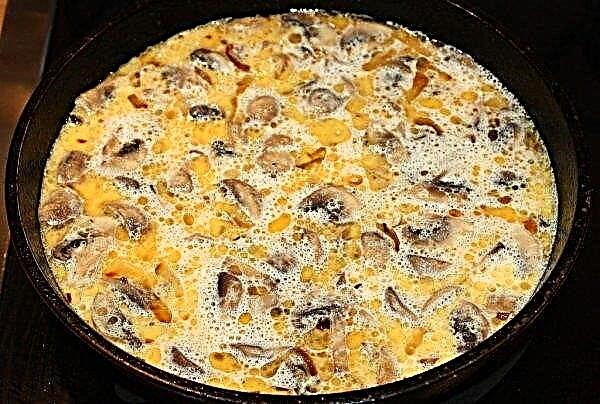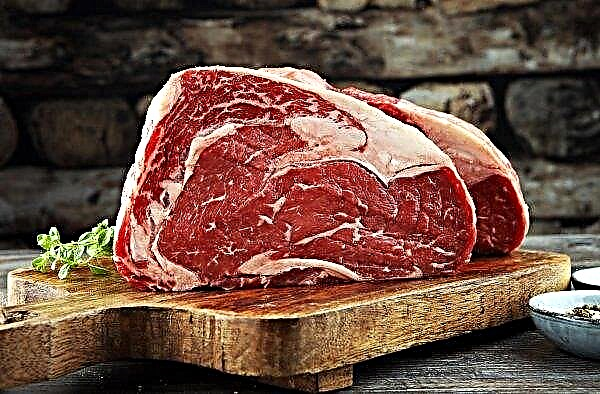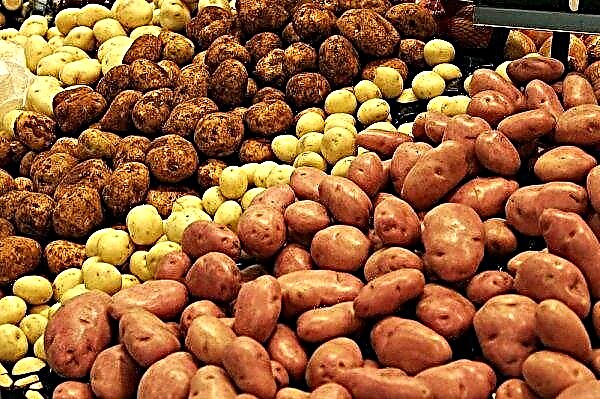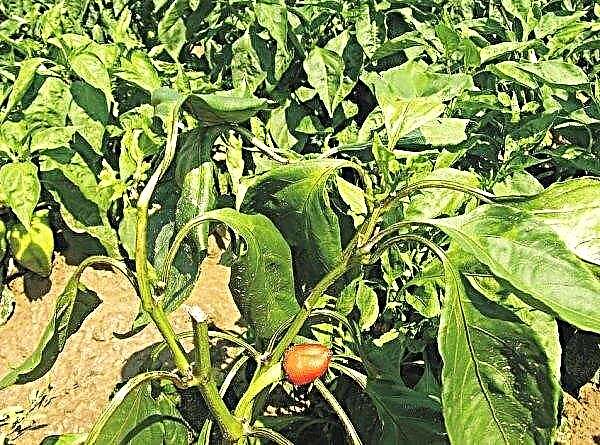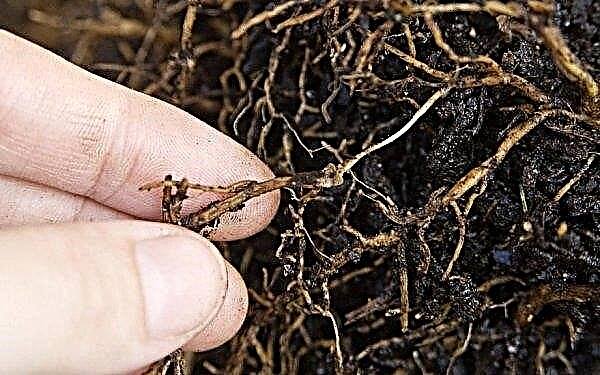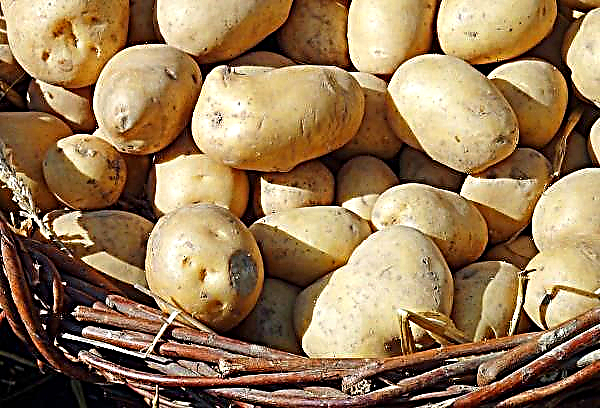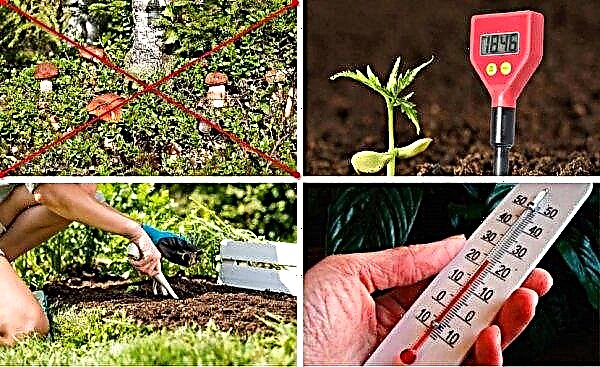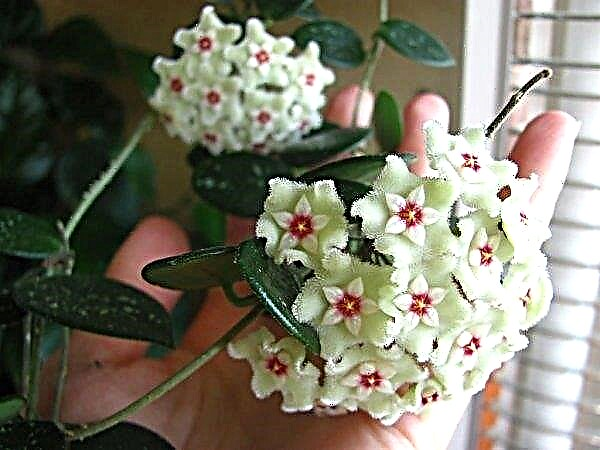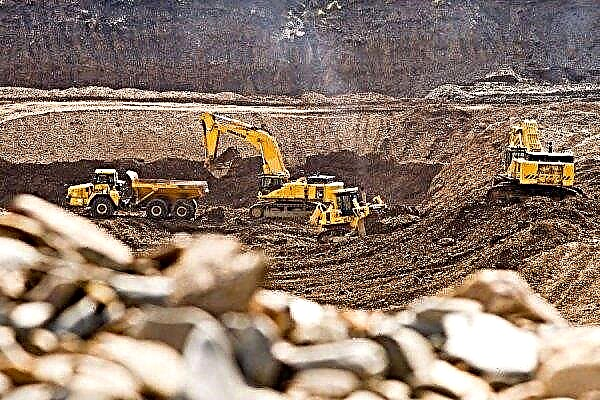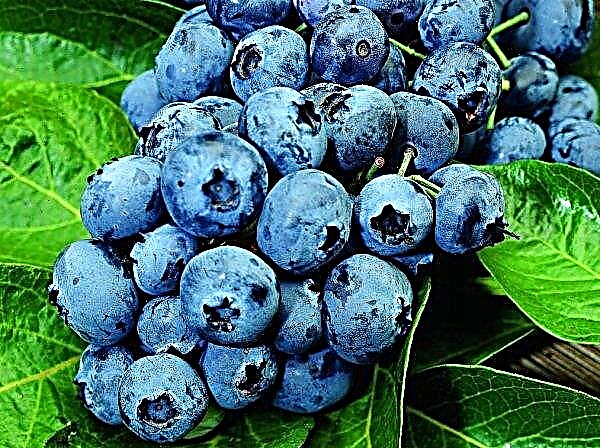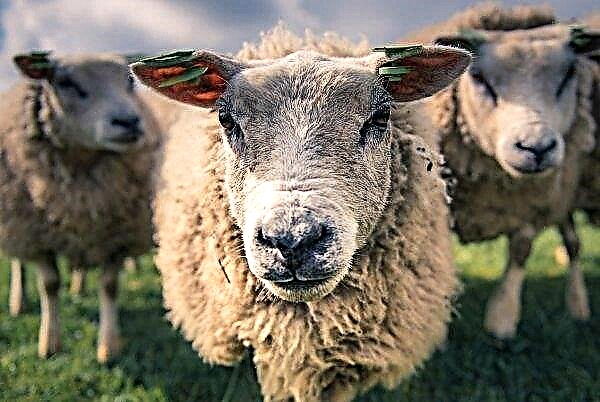Onion family - one of the varieties of onions. If you are interested in what it is, then you probably know it under the names “shallots”, “shrubbery” or “multiglanted onions”. It differs from other varieties of vegetables by the presence of a nest of small bulbs. All you need to know about it - descriptions of varieties, growing technology and other useful information - is collected in this review.
The best varieties of family onions
The edible onion bush is popular among gourmets and chefs because of its delicate taste, similar to a mixture of garlic and onions. Bulbs vary in color, shape, texture of scales and size. Consider some of the best varieties that will grow well on the site and satisfy your taste preferences.
Early ripe
The main characteristic of early varieties is the ripening of the crop in 60–90 days. The stage of technical maturity begins in 20-30 days, and at this time the first cut of the green feather is carried out. Then the onions turn green until mid-summer, depending on the variety, pleasing with an additional collection of leaves.
These varieties are considered a delicious addition to any meal. They are tender, fresh, they can be torn to feather all spring. By mid-summer, the leaves begin to turn yellow and die, and it's time to harvest. Usually early ripe varieties are grown in containers or planted directly in the ground.
Emerald
Emerald variety almost does not form an onion, but long emerald tender feathers can be cut off already 20 days after planting. Full maturity occurs in 70–80 days. For the entire season, until the fall, you can harvest the greens as much as 4 times. To do this, you only need to water and periodically feed the plants. Emerald is resistant to frost, so it is grown from early spring to late autumn.
To do this, you only need to water and periodically feed the plants. Emerald is resistant to frost, so it is grown from early spring to late autumn.
Did you know? The oldest evidence of onion cultivation dates back to 5000 BC. e. This means that people have been eating this plant for more than 7000 years, that is, since the Bronze Age.
Main characteristics:
- 3-4 bulbs in the nest;
- the mass of the nest is 60–80 g;
- productivity from 1 m² - 6-8 kg;
- the taste is peninsular.
Snowball
A fine variety with a white rounded onion and a distinctive tangy flavor. Small Snowball bulbs are suitable for pickling and reach maturity after about 95 days. The harvest is well stored for 7 months. Main characteristics:
Main characteristics:
- 3-5 bulbs in the nest;
- individual bulb weight - 30 g;
- nest weight - 90–150 g;
- productivity from 1 m² - 7–8 kg;
- the taste is peninsular.
Sprint
Sprint shallots have a delicate, semi-sharp taste. Its bulbs are slightly elongated, yellowish-pink in color. The first crop can be obtained already on the 20th day, and before full maturity it will take 60 days. Sprint is one of the most practical varieties due to its high resistance to bulb diseases.
Main characteristics:
- 6–10 bulbs in the nest;
- the weight of an individual onion is 20–40 g;
- nest weight - 120-350 g;
- productivity from 1 m² - 5-8 kg.

Mid-season
Varieties are considered mid-ripening, in which 100-110 days pass from planting to full ripening. The technical maturity of mid-ripe onions occurs in 30–40 days. Such onions can also be torn “on the feather”, but basically it is intended for receiving medium-sized onions. The weight of each of them is from 30 to 60 g, depending on the variety and growing conditions.
Did you know? The longest ribbon from an onion crop was woven during the festival in the Romanian city of Turde in September 2008. The length of the tape was 5817 m. It used 12 tons of onions.
Taste characteristics of mid-season varieties of onion are more diverse in severity. These varieties are intended for planting in the winter due to their high frost resistance and long storage time.
Albik
This variety has an elongated rounded bulb of small size and an average weight of 30 g. The outer shell is golden yellow. A leaf plate of medium length, dark green in color. In cooking, it is suitable for eating fresh and canned, for salads, has a juicy, fresh, semi-peppery taste. Vegetation lasts 62–65 days. It is characterized by high keeping quality, bulbs are perfectly stored for 7–9 months in a dry and warm room (at a temperature of 0–5 ° С). Suitable for winter planting.
Vegetation lasts 62–65 days. It is characterized by high keeping quality, bulbs are perfectly stored for 7–9 months in a dry and warm room (at a temperature of 0–5 ° С). Suitable for winter planting.
Main characteristics:
- the nest consists of 3–8 bulbs;
- nest weight - 120–240 g;
- productivity from 1 ha - 13 tons
Kuban yellow
It has small, round, flat, juicy bulbs weighing 50–70 g. The outer layer of scales is brown-yellow, and the inside is white with a hint of green. Leaves of medium length, saturated green. It is characterized by a semi-acute taste. The growing season is 89–95 days. The variety is intended for onions. It is used fresh in cooking, for pickling and cooking. Kuban yellow is suitable for short-term storage (3-4 months). It is recommended to grow in 2 ways: seedlings, as well as sowing in the ground. The variety is resistant to drought.
It is used fresh in cooking, for pickling and cooking. Kuban yellow is suitable for short-term storage (3-4 months). It is recommended to grow in 2 ways: seedlings, as well as sowing in the ground. The variety is resistant to drought.
Important! Red onion varieties are more susceptible to rot and need careful heat treatment of planting material. It also increases productivity.
Main characteristics:
- 3-4 bulbs in the nest;
- nest weight - 120 g;
- productivity from 1 m² - 3 kg.
Koynarsky
The Koynarsky variety has medium-sized, round-oval bulbs weighing 25-30 g. The outer scales are pinkish-brown, the flesh is pale lilac, juicy, aromatic. The vegetative period of a vegetable is 83–90 days from the appearance of the first sprouts to complete wilting of the greens. The variety is characterized by medium strength, pungent taste and lush dark green leaves. It is recommended to grow by sowing in open ground or through seedlings. Main characteristics:
Main characteristics:
- in the nest - 2–4 bulbs;
- nest weight - 120 g;
- productivity from 1 ha - 25 tons
Late ripening
Late-ripening varieties ripen not earlier than after 4 months (120-140 days). A growing season of more than 120 days makes their use unacceptable for regions with short and cool summers, leaving only greenhouse cultivation. Therefore, the so-called mid-late, as well as mid-ripening varieties are recommended for the northern regions. To accelerate their maturation, you can grow these varieties in seedlings. It is also worth considering that late-ripe family onions are most demanding on the quality of the soil.
Did you know? The largest onion was grown by a UK farmer, Tony Glover. She weighed 8.5 kg. The giant bulb was presented at the September 2014 Fall Flower Show in North Yorkshire.
Among the main characteristics of the group:
- larger bulbs - up to 80 g each;
- disease resistance;
- excellent keeping quality;
- frost resistance.
Kunak
Kunak is a mid-season variety of peninsular taste. Its growing season is 70–75 days. The leaves are dark green. Elongated, slightly rounded bulbs of small size reach a weight of 35–55 g. Scales are yellow-brown in color. The pulp is pinkish-purple, juicy. It is characterized by excellent keeping quality and can be stored for more than 1 year. Great for fresh use. Recommended for cultivation in all regions by sowing in open ground.
The pulp is pinkish-purple, juicy. It is characterized by excellent keeping quality and can be stored for more than 1 year. Great for fresh use. Recommended for cultivation in all regions by sowing in open ground.
Main characteristics:
- in the nest - up to 10 bulbs;
- nest weight - 200-300 g;
- productivity from 1 m² - 3-4 kg.
Fortress
Fortress is also a mid-season variety with a growing season of 50–70 days. Oval bulbs weighing approximately 20-50 g are covered with pinkish-brown scales. The variety is resistant to rifle and rot. The main purpose of the Krepysh variety is to obtain early feather products, eat it fresh, for cooking and for canning. Suitable for long-term storage and for winter planting.
Did you know? In ancient Egypt, the bow was considered the embodiment of eternity and the object of worship. He was buried with the pharaohs, as they believed that he was necessary for traveling to the underworld.
Main characteristics:
- the nest consists of 4–7 bulbs;
- nest weight - 200-300 g;
- productivity from 1 ha - 12 tons

Siberian Amber
Siberian amber is one of the most popular mid-season varieties. The growing season lasts 55-60 days of sprouts to complete wilting of leaf plates. It is characterized by medium strength growth. Grown as a feather, and for bulbs of yellow-bronze color with a weight of 20-30 g and a classic spicy taste.
The inner flesh is white, juicy, with an average aroma. Siberian amber is characterized by high productivity, excellent keeping quality and resistance to ailments. It is recommended to grow by sowing in open ground or seedlings (sowing in a box).
Main characteristics:
- 6–7 bulbs in the nest;
- nest weight - 150-200 g;
- productivity from 1 ha - 11 tons

The advantages and disadvantages of family onions
The advantages of this type of onion can be considered in 2 directions:
- for business;
- for health.
Important! Despite the fact that shallots have a positive effect on the lens and eye muscles, it is still not able to restore vision. Therefore, for the treatment you need to use drugs.
As a product, cabbage is consumed raw, in the preparation of various dishes and canning. Both leaves and bulbs are rich in vitamins and other biologically active substances, which provide him with a lot of advantages and useful properties.
- Advantages and useful properties of family onions:
- Due to the large amount of sodium and potassium, the plant helps to normalize blood pressure and improve the tone of blood vessels.
- Onion juice stimulates digestion, improves appetite, provoking a more active secretion of gastric juice.
- It is recommended to add the vegetable to heavy dishes - fried and fatty, to improve their digestibility.
- The use of this plant helps to improve vision - shallots are useful to introduce into the diet for those who have eye problems.
- Due to its high antioxidant properties, tillering actively removes toxins from the body, maintaining the normal state of cells.
- Vegetable stimulates the productive work of the brain, improves memory, increases tone.
- Harm of shallots:
- A large amount of onion, consumed at a time, can impede the flow of oxygen to the cells, causing oxygen starvation.
- People with pancreatic diseases and constipation may feel worse.
- May aggravate the condition of those who have diseases of the gastrointestinal tract and genitourinary system.
The choice of planting material for growing
You can grow onions from seeds or small bulbs - sevka. The main advantage of growing from seeds is low cost. Seeds can grow into large bulbs. Their size and yield is higher, the more suitable conditions for development you provide. Onions love nutritious soil. Greenhouse cultivation extends the growing season - you can sow seeds already in winter and get a crop in late February and early spring.
Seed selection
If the seeds are fresh, they have a specific aroma and look healthy and shiny, and become dull during prolonged storage. Since we cannot visually determine the presence of pathogenic bacteria on the seeds, before planting, they must be decontaminated with a 3% solution of potassium permanganate for 20 minutes.
Sevka selection
A typical planting bulb has the following characteristics:
- weight - 30–40 g;
- size - 3-4 cm;
- elastic, without signs of rot.
Planting a family onion
Onion crops grow on a variety of soils. It is enough to recall that the wild ancestor of the onion generally prefers mountainous rocky soil. Sandy, warm soils with good drainage, rich in organic substances, are considered an excellent choice. It is these soils that give the highest yields. Clay soils do not provide enough oxygen for the normal functioning of the root system, so they need to be improved by diluting with sand, peat or other loose materials. If water stagnates in the soil due to clay, then this also becomes the cause of rotting of the bulbs and poor harvest. Regarding acidity, onions prefer slightly acidic or neutral soils (pH: 6.5–7). In soil whose acidity is outside this range, productivity decreases. Traditionally, onions are planted in spring when the soil begins to heat up. However, some gardeners prefer autumn planting, leaving the onions to winter in the ground. The advantage of autumn planting is that the plants will be ready for harvest a little earlier than their spring relatives.
If water stagnates in the soil due to clay, then this also becomes the cause of rotting of the bulbs and poor harvest. Regarding acidity, onions prefer slightly acidic or neutral soils (pH: 6.5–7). In soil whose acidity is outside this range, productivity decreases. Traditionally, onions are planted in spring when the soil begins to heat up. However, some gardeners prefer autumn planting, leaving the onions to winter in the ground. The advantage of autumn planting is that the plants will be ready for harvest a little earlier than their spring relatives.
In spring, planting is carried out in March or April - this is the time when the soil has already warmed up enough. Choose dense, well-drained soil and a sunny area. Make a shallow groove on the bed for planting. Pour rotten garden compost into the soil to improve drainage and soil fertility - it’s just rotted manure or leaf soil in order not to exceed the nitrogen concentration and not burn the bulbs.
Did you know? In the 1st century AD the Greek physician Dioscorides advocated the intensive use of onions. At the olympic games greek athletes before the competition, they reinforced themselves by eating kilograms of onions and washed down with clean onion juice. Surely defeating rivals was possible with one breath.
Sow the seeds to a depth of 1 cm, leaving a distance of 30 cm between the rows. If you plant onion sets, then the tip of each bulb should stick out from the soil. The distance between the rows will remain the same as when sowing the seeds, but leave a distance of 10 cm between the bulbs. You can also sow seeds in the winter on the windowsill in the form of seedlings or in a greenhouse. Seal containers with planted seeds with plastic wrap to ensure optimal temperature conditions (10–15 ° C). Once they germinate, peel off the film to lower the temperature. Germination occurs within 7-10 days. This time increases at low soil temperatures. If it is already very warm, then sprouts can appear in 4 days. After planting the onion, it is worth covering the beds with branches or a protective net - this will protect them from large birds, which can damage the bulbs by pulling them out.
Once they germinate, peel off the film to lower the temperature. Germination occurs within 7-10 days. This time increases at low soil temperatures. If it is already very warm, then sprouts can appear in 4 days. After planting the onion, it is worth covering the beds with branches or a protective net - this will protect them from large birds, which can damage the bulbs by pulling them out.
Onion Care
Onions have small roots, so they need watering throughout the growing season. But as soon as the leaves begin to fade at the end of the growing season, watering must be stopped. Watering frequency - as the soil dries up visually. You need to regularly remove weeds. Loosening the soil should be carried out 1-2 times a week, after each watering - this improves the supply of roots with oxygen and removes weeds. If they are not removed, they will compete with onions for moisture and nutrients in the soil.
Important! Onions can cause poisoning of animals. Its biologically active substances affect red blood cells in their blood, so onions should not be given to pets in any form.
In addition to the sunny area and the drained soil, the plant needs fertilizers. Top dressing is carried out twice: the first time after 3 bulbs appear in the bulbs, and the second - when they grow 5 new leaves.After the appearance of the 3rd leaf, the processes of photosynthesis intensify, and onions begin to actively accumulate substances for the formation of bulbs.
At this time, you must make:
- nitrogen and sulfur, which contribute to the formation of leaves and roots; avoid an excess of nitrogen, as this will reduce the size of the bulbs;
- phosphorus for rooting and the onset of bulb formation;
- potassium for root growth and increased photosynthesis.
 You can also apply urea to feed - for this you need to prepare a solution of 1 tbsp. preparation per 10 liters of water and add any potash fertilizer to the solution. Potassium monophosphate is suitable for the second top dressing, since at this time the plant needs to increase the dose of this mineral. The dosage remains the same as with the previous feeding (1 tbsp. Per 10 liters of water).
You can also apply urea to feed - for this you need to prepare a solution of 1 tbsp. preparation per 10 liters of water and add any potash fertilizer to the solution. Potassium monophosphate is suitable for the second top dressing, since at this time the plant needs to increase the dose of this mineral. The dosage remains the same as with the previous feeding (1 tbsp. Per 10 liters of water).Harvesting and storage
Family onions are ready to harvest if the bulbs have reached a diameter of 5-6 cm, and their leaves have begun to turn yellow and dry. The collection period depends on the onion variety and its growing season: it can be from 2.5 to 4 months after planting. Stop watering 1–2 weeks before harvesting to allow the bulbs to grow stronger and eliminate excess moisture, otherwise the shelf life of these vegetables will be significantly reduced. Wait until the bulb scales become dense, after which they can be dug up and allowed to dry in a dry, warm, well-ventilated place.
Then you need to fold the bulbs in a box or tie them in bunches and hang them for storage. So, a family onion combines many useful properties. It can be grown both for your needs and for sale. Having chosen several varieties, be sure to provide them with good conditions for growth - this will allow you to get the maximum yield of shallots.

